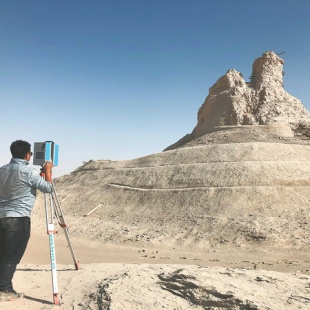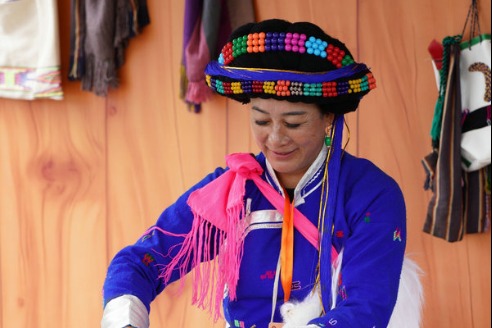Exploring the lost land of Loulan


Among the greatest historical mysteries in the world, one draws the eyes of archaeologists and historians worldwide to the middle of nowhere in Northwest China -the legendary Loulan.
As one of the many oasis states in ancient China's western regions, roughly today's Xinjiang Uygur autonomous region, Loulan witnessed hundreds of years of splendor around the time of the Han Dynasty (206 BC-AD 220) before fading out of history, its cities vanishing into endless sand.
Not until the start of the 20th century did Loulan, also known as Kroraina, reappear to the world in an accidental discovery in the Taklimakan Desert by Swedish explorer Sven Hedin, which has since set off a global craze for Loulan studies.
Now with more findings coming out of the millennia-old ruins, the once mysterious Loulan offers a rare glimpse into the history of Xinjiang, the close relations between the western and central regions of ancient China, as well as the shared cultural identity of Chinese civilization.
A deserted desert
The Loulan Ruins comprise a number of archaeological sites scattered on the eastern fringe of the Taklimakan near the now-desiccated Lop Nur salt lake, among which the jewel in the crown is the ancient city of Loulan.
Dubbed the "Oriental Pompeii", the city of Loulan, presumably the capital of the Loulan Kingdom, was situated at the juncture of the southern and northern routes of the ancient Silk Road.
Today, the once flourishing city is a heap of ruins hidden in sand dunes to the northeast of Xinjiang's Ruoqiang county.
Seen from above, the large settlement was basically square, covering an area of about 108,000 square meters. In its northeast stands the tallest structure in the city — a dilapidated Buddhist stupa about 10.4 meters high.
Not far away is the well-known "three-room house", the remains of a structure deemed to be a government office, where a treasure trove of inscribed wooden slips and paper documents was found.
"Everything here is a cultural relic and has great value," says 19-year-old Adiljan Jilir, the youngest of the rangers tasked with protecting the Loulan Ruins.
Due in no small part to the lasting fame of Loulan, the ancient city and nearby tombs have become a hot spot for uninvited tourists and even a target of cultural relic theft, despite their far-flung location.
To keep the ruins safe, Adiljan and his teammates make regular patrols around the ruins every day. In addition to the intruders, they have bigger challenges to deal with- the dreadful weather and the no less dreadful loneliness.
Gusty winds and sandstorms commonly occur for most of the year, and in summer the surface temperature can reach 70 C.Apart from those harsh elements, only sand and silence keep them company.
"We are guardians of the Loulan Ruins. We have to put up with the loneliness, the sandstorms and the searing heat," says Ma Zhuang, a 42-year-old ranger.
He says he knew little about Loulan before taking the job, but has now developed a profound bond with the ancient ruins after reading a lot of history books.
"Life here is bitter, indeed, but now I enjoy it like sugar," Ma says.





































